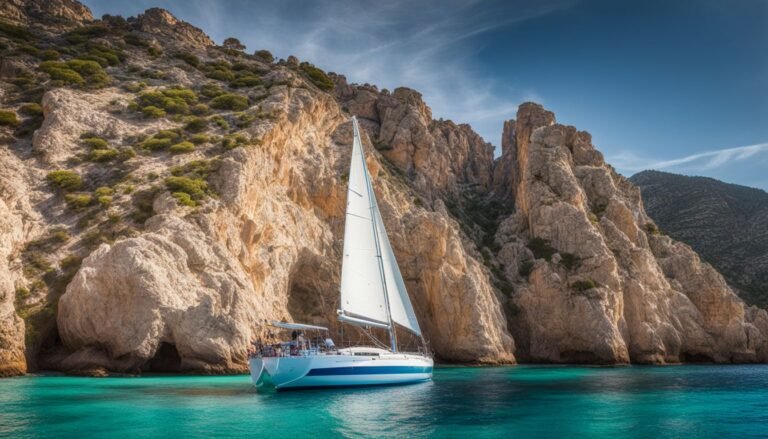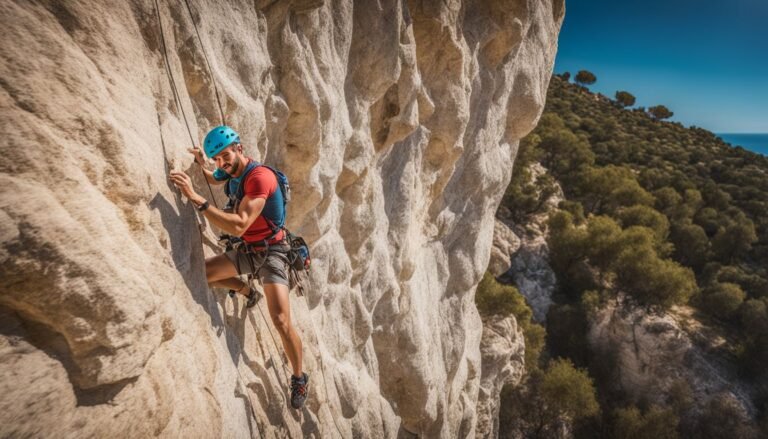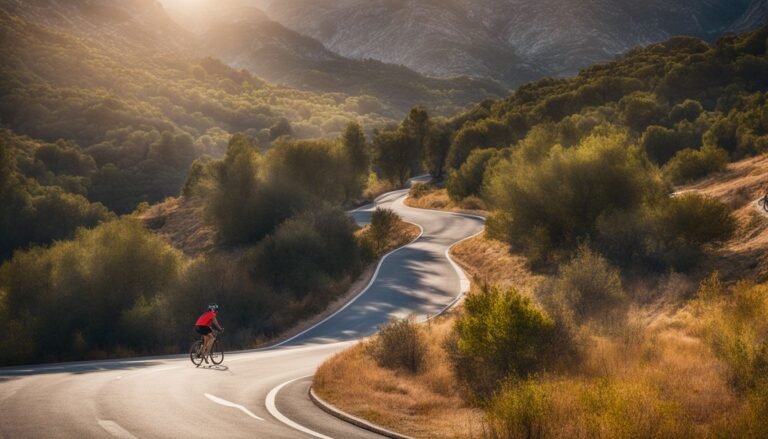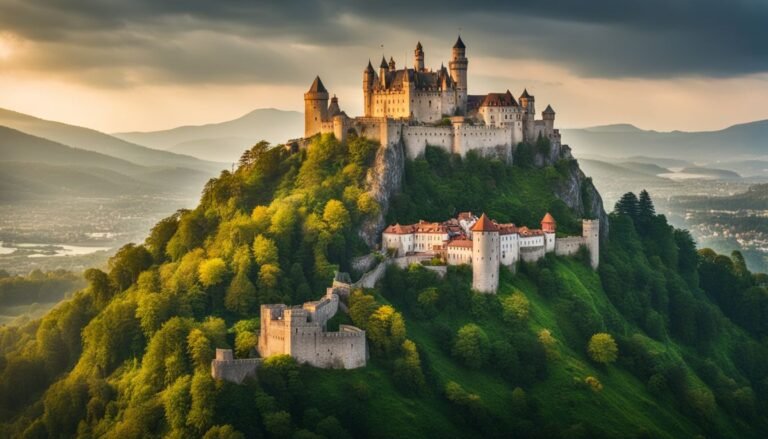Historic churches and cathedrals in Costa Blanca
Finding the right places to visit in Costa Blanca can be overwhelming. Did you know this region is home to 67 historic churches and cathedrals? Our blog post will guide you through the most breathtaking religious sites, showing where history and architecture meet.
Get ready to explore!
Overview of Historic Churches in Costa Blanca
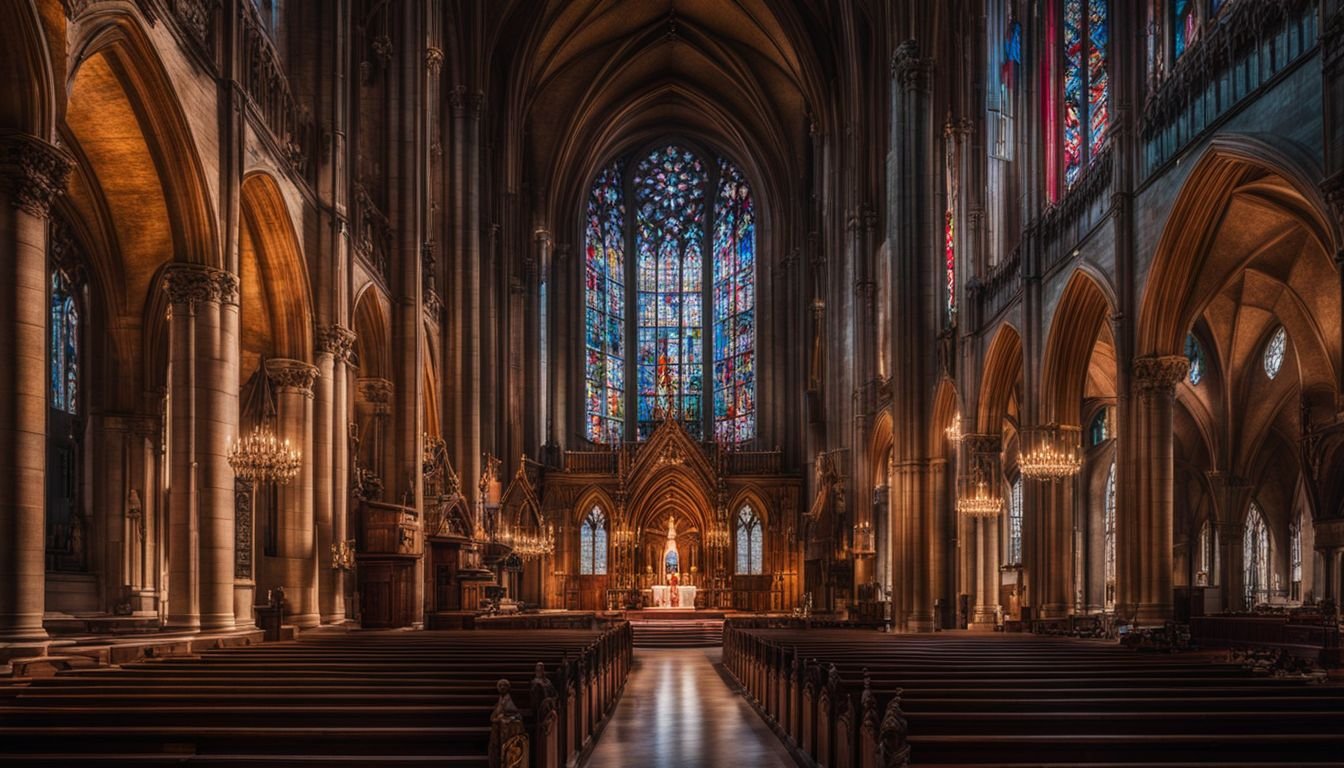
Explore the historic churches of Costa Blanca, each steeped in architectural and cultural significance. These awe-inspiring structures showcase late-Gothic and Renaissance styles, offering visitors an enriching historical experience.
Parroquia Nuestra Senora del Consuelo
Parroquia Nuestra Senora del Consuelo stands out in Altea, a town celebrated for its historical churches and cathedrals along Costa Blanca. This church captures attention with its two distinctive domes covered in glazed ceramic blue tiles, showcasing an architectural feature that sets it apart from others.
Visitors often praise its breathtaking interior and exterior, making it a top destination for those interested in exploring religious sites steeped in beauty and history.
The area surrounding the church is equally stunning, offering picturesque views that complement the tranquility found within its walls. Parroquia Nuestra Senora del Consuelo serves as a peaceful retreat for visitors seeking to immerse themselves in Spain’s rich cultural heritage.
It ranks highly on activities ranking factors for social travel enthusiasts who appreciate architecture’s role in history. Moving on from this serene site, another historic marvel awaits at Església de Sant Jaume i Santa Anna.
Església de Sant Jaume i Santa Anna
The Església de Sant Jaume i Santa Anna stands as a beacon of history and architecture in Costa Blanca, Spain. Known for its ornate surroundings and unique architectural details, this church captivates visitors with its beauty and tranquility.
People often leave positive reviews, highlighting the serene atmosphere and stunning visuals that make it more than just a place of worship.
Located in a picturesque area, the church’s appeal extends beyond its spiritual significance. It draws tourists interested in exploring historic churches & cathedrals, adding an enriching stop on their journey through Costa Blanca.
The Església de Sant Jaume i Santa Anna represents a piece of the region’s rich historical tapestry worth visiting for anyone fascinated by gothic style architecture or seeking peace amid breathtaking scenery.
Iglesia Ortodoxa Rusa San Miguel Arcangel
Iglesia Ortodoxa Rusa San Miguel Arcangel stands out in Costa Blanca, Spain, for its distinctive Russian Orthodox architecture. Constructed from wood, this historic church captivates visitors with its two impressive domes adorned with glazed ceramic blue tiles.
It represents a unique blend of cultural and architectural heritage amidst the diverse religious structures in the region.
Tourists often praise this site for its unparalleled beauty and intricate architectural details. As one of the 67 historic churches in Costa Blanca, Iglesia Ortodoxa Rusa San Miguel Arcangel draws attention not only for its spiritual significance but also as a popular landmark among those exploring historical and cultural attractions in Altea.
Notable Cathedrals in Costa Blanca
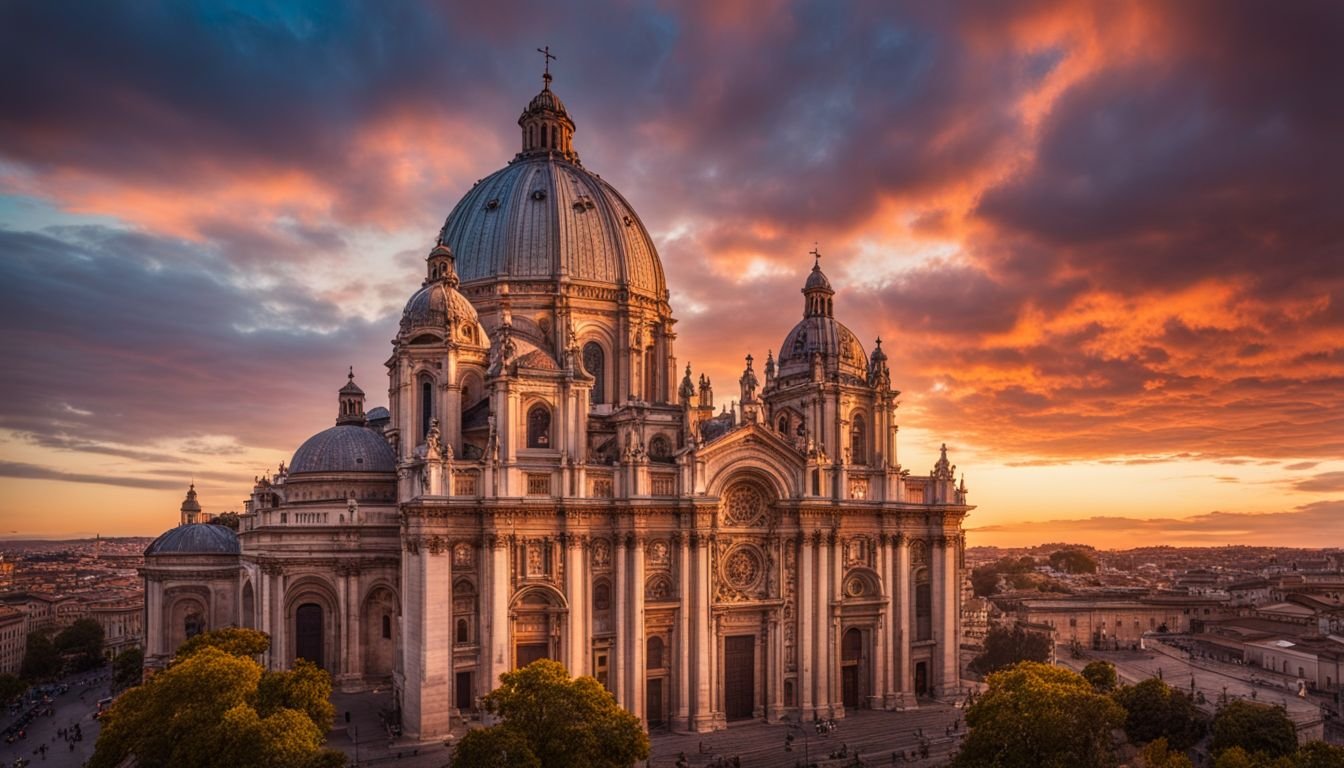
The Basilica Santa Maria is a striking example of Gothic architecture, known for its intricate details and soaring spires. Meanwhile, the Concatedral Sant Nicolau de Bari d’Alacant showcases Spanish Baroque elegance with its ornate decorations and grandiose design.
Basilica Santa Maria
Basilica Santa Maria stands as a notable church in Costa Blanca, Spain. It has garnered acclaim for its breathtaking architecture and impressive organ. Visitors have been captivated by the picturesque surroundings of the basilica, offering a serene and tranquil atmosphere that adds to the allure of this historic site.
The church is frequented by tourists and history enthusiasts seeking to immerse themselves in the region’s rich architectural heritage. As part of its positive reception, Basilica Santa Maria stands out as an essential stop for those exploring Costa Blanca’s religious landmarks.
The area surrounding Basilica Santa Maria is known for its stunning views, making it a must-visit destination for anyone interested in history, architecture, or simply appreciating beautiful surroundings.
Concatedral Sant Nicolau de Bari d’Alacant
The Concatedral Sant Nicolau de Bari d’Alacant, located in Alicante, Costa Blanca, Spain, offers visitors a captivating experience with its stunning architecture and rich history. This cathedral has received a commendable 4.0 out of 5 ratings from 381 reviewers on Tripadvisor, indicating its popularity among tourists.
The interior of the Concatedral Sant Nicolau de Bari d’Alacant boasts spacious rooms and beautiful altars that have left an impression on many visitors. Situated in a province known for its historic churches and cathedrals, this masterpiece is part of an array of notable religious sites in the area.
Immersing yourself in the allure of the Concatedral Sant Nicolau de Bari d’Alacant can be a highlight when touring Costa Blanca’s architectural wonders.
Monasteries of Interest in Costa Blanca
Explore the serene beauty and rich history of the Santa Faz Monastery, a significant pilgrimage site known for its revered relic. Discover the tranquil surroundings and captivating architecture of Costa Blanca’s Ermita de San Antonio, offering a peaceful retreat steeped in cultural heritage.
The Santa Faz Monastery
The Santa Faz Monastery in Alicante is a highly-rated attraction, with 71 reviewers on Tripadvisor giving it a 4.5 out of 5 rating. Tourists and visitors are drawn to the monastery as it offers a peaceful and quiet experience for those interested in history and architecture.
The site provides a moving exploration of historic and cultural landmarks in Alicante, making it an essential visit for travelers seeking to dive into the architectural heritage of Costa Blanca.
Unique Chapels in Costa Blanca
Discover the unique charm of the Ermita de San Roque and Ermita de San Antonio, where history and tranquility blend seamlessly. These picturesque chapels offer a serene retreat for visitors seeking a glimpse into Costa Blanca’s rich religious heritage.
Ermita de San Roque
The Ermita de San Roque stands as a remarkable historic church, beckoning visitors to explore its rich cultural and religious heritage in Costa Blanca, Spain. With its serene and peaceful surroundings, the Ermita de San Roque offers an immersive experience for travelers interested in history, architecture, and the region’s heritage.
This notable attraction has garnered positive reviews from tourists who appreciate its architectural beauty and unique ambiance.
Nestled amidst the captivating landscapes of Costa Blanca, the Ermita de San Roque presents a must-visit opportunity for those seeking insight into the intricate historical tapestry of this enchanting region.
Ermita de San Antonio
Ermita de San Antonio stands as a significant historic landmark in Costa Blanca, Spain. This chapel, nestled amidst the region’s stunning landscape, exudes an air of tranquility and historical significance.
Dating back through the annals of time, Ermita de San Antonio is steeped in rich cultural heritage and holds a unique place among the other chapels and religious sites in the area.
Visitors to Ermita de San Antonio are captivated by its timeless charm and architectural allure. The chapel offers a glimpse into the past while showcasing the enduring spiritual legacy of Costa Blanca.
Exploring the Architectural Heritage of Costa Blanca: From Churches to Castles
The architectural heritage of Costa Blanca encompasses a diverse array of religious and historical landmarks, contributing to the region’s rich cultural tapestry. From ancient churches and cathedrals to majestic castles, visitors can embark on a captivating journey through time.
Notable sites such as Parroquia Nuestra Senora del Consuelo and Basilica Santa Maria showcase exquisite late Gothic architecture, while the imposing presence of Concatedral Sant Nicolau de Bari d’Alacant adds to the allure.
These structures not only bear witness to centuries of history but also offer a glimpse into the artistry and craftsmanship of their eras.
Moreover, monasteries like The Santa Faz Monastery provide serene retreats steeped in spirituality, inviting visitors to immerse themselves in contemplation amidst breathtaking surroundings.
For those seeking a deeper understanding of Costa Blanca’s past, exploring its architectural legacy from churches to castles promises an enriching experience that brings history vividly to life.
How to Tour Religious Sites in Costa Blanca
After exploring the architectural heritage of Costa Blanca, it’s time to discover how to tour the religious sites in this vibrant region. Whether you’re a history enthusiast, an architecture buff, or simply seeking a serene and spiritual experience, visiting these religious sites can be a truly enlightening journey. Here’s how to make the most of your tour:
- Research Beforehand: Begin by researching the various churches, cathedrals, monasteries, and chapels in Costa Blanca. Understand their historical significance and unique features to tailor your visit based on your interests.
- Guided Tours: Consider joining guided tours for in-depth insights into the religious sites. Companies like GetYourGuide offer expert-led tours that provide historical context and architectural details while ensuring a seamless touring experience.
- Respect Cultural Customs: While visiting these religious sites, it’s essential to respect local customs and dress codes. Modest attire is often required when entering churches and cathedrals as a sign of respect.
- Capture Moments: Take some time for reflection and capture the beauty of these historic places through photography or sketches while being mindful of other visitors’ space.
- Embrace Tranquility: Allow yourself to soak in the peaceful ambiance of these religious sites. Whether you choose to sit quietly within the grandeur of a cathedral or stroll through the serene courtyards of a monastery, embrace the tranquility they offer.
- Learn from Local Experts: If possible, engage with local historians or clergy members who can share fascinating stories about each site’s history and its cultural significance within the region.
- Appreciate Architectural Marvels: Lastly, take time to appreciate the intricate details and architectural marvels found within these religious buildings – from ornate stained glass windows to grandiose altars – there is much beauty waiting to be discovered.
This article will help you embark on a meaningful exploration through Costa Blanca’s historic religious sites—each with its own compelling story waiting to be uncovered!
Conclusion
Experience the rich history and architectural marvels of Costa Blanca through its historic churches, cathedrals, monasteries, and chapels. Visualize the intricate details of Gothic-style structures and unique features within each religious site.
Explore a realm where history meets artistry, showcasing centuries of craftsmanship and cultural significance. Immerse yourself in a journey that unravels the secrets of these timeless landmarks.
Embark on an enlightening adventure into the heart of Costa Blanca’s religious heritage.
FAQs
1. What makes the Basilica of the Sagrada Familia so special?
The Basilica of the Sagrada Familia, designed by Antonio Gaudí, is famous for its stunning gothic style and intricate details. It stands out as a masterpiece in architecture.
2. Who was Antonio Gaudí?
Antonio Gaudí was a renowned architect known for his unique designs and significant contributions to modernist architecture, including the design of the iconic Basilica of the Sagrada Familia.
3. Can you find gothic style churches in Costa Blanca?
Yes, Costa Blanca is home to several historic churches that feature beautiful gothic style architecture, offering a glimpse into the region’s rich cultural heritage.
4. What is a bishop’s chair, and why is it important?
A bishop’s chair, also known as a cathedra, represents the bishop’s authority within his diocese and can be found in cathedrals. Its presence signifies a cathedral’s significance as the main church of an area.



